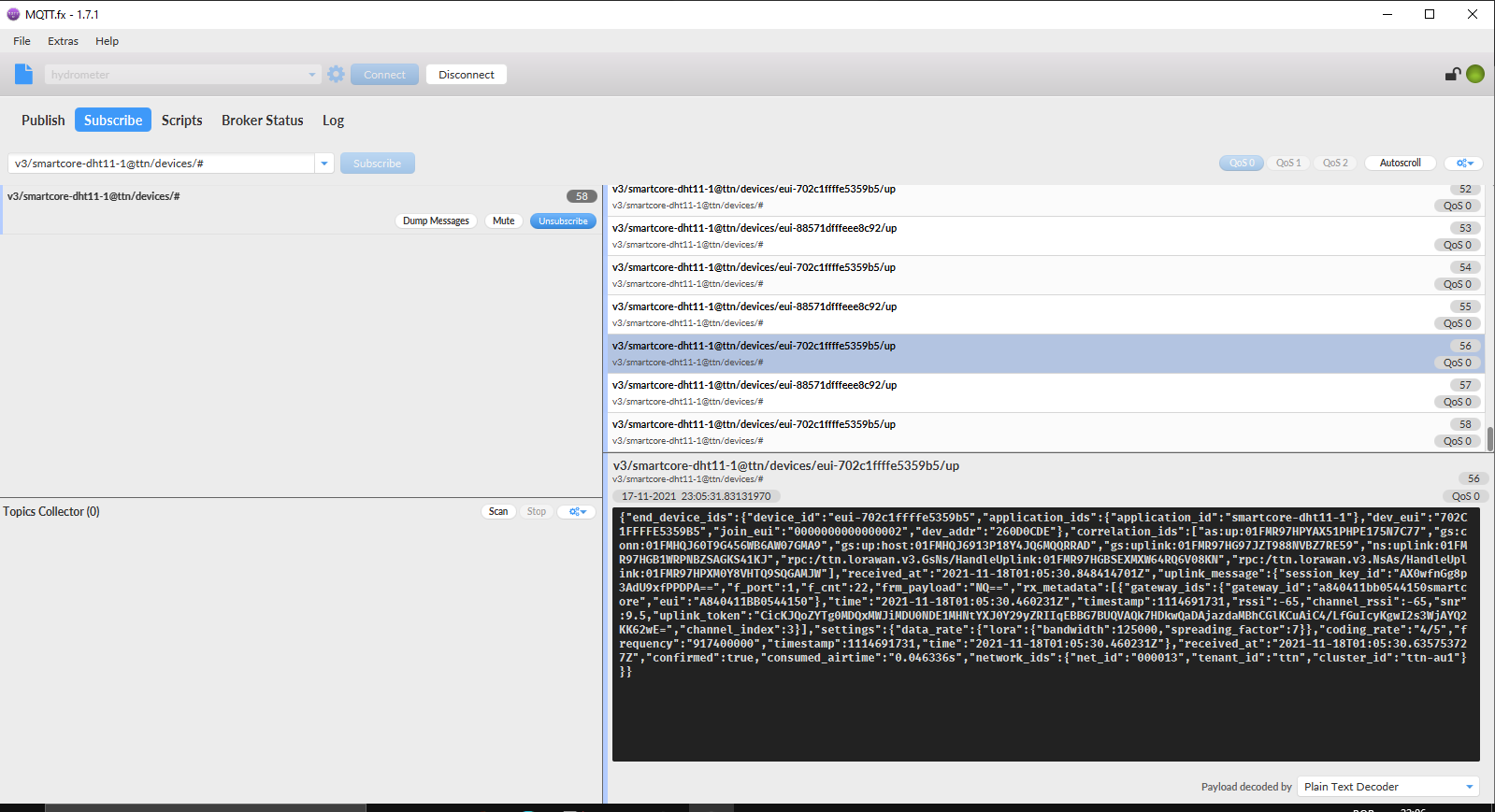You tell me - think about how you would manage 18,000 connections - that would be 18,000 threads - how many sockets can a computer reasonably support? Where will this data be stored? How will it be accessed / analysed?
"I never implemented a big SERVER but i will advice the team about number of Threads. Our server will SUBSCRIBE (connect) to the TTN MQTT TOPIC and get END DEVICE info when TTN PUBLISH on that TOPIC. Data will be stored in our SERVER."
I was wondering how you will manage 18,000 devices, not what the uplink frequency would be. How will you spread the devices over applications, how will you identify where to go to manage a device, how will you manage failures …
"i hope that the info is here in the TOPIC:
{“end_device_ids”:{“device_id”:“eui-88571dfffeeexxxx”,“application_ids”:{“application_id”:“smartcore-dht11-1”},“dev_eui”:“88571DFFFEEExxxx”,“join_eui”:“0000000000000000”,“dev_addr”:“26xx589F”},“correlation_ids”:[“as:up:01FMQWDSKCVTHMSSW0FKVZAFY8”,“gs:conn:01FMHQJ60T9G456WB6AW07GMA9”,“gs:up:host:01FMHQJ6913P18Y4JQ6MQQRRAD”,“gs:uplink:01FMQWDSCSGWJZTC2VPDAXAGDK”,“ns:uplink:01FMQWDSCTW5KCEAE27PMBYSCT”,“rpc:/ttn.lorawan.v3.GsNs/HandleUplink:01FMQWDSCT29REC5P3X6DZ01TB”,“rpc:/ttn.lorawan.v3.NsAs/HandleUplink:01FMQWDSKCA3ZBGKVS72GV5MCE”],“received_at”:“2021-11-17T21:21:44.046350123Z”,“uplink_message”:{“session_key_id”:“AX0vC2z+LsWKyQDSEcxFMQ==”,“f_port”:1,“f_cnt”:189,“frm_payload”:“MTg4”,“rx_metadata”:[{“gateway_ids”:{“gateway_id”:“a840411bb0544150smartcore”,“eui”:“A840411BBxxxxx150”},“time”:“2021-11-17T21:21:43.660266Z”,“timestamp”:572797164,“rssi”:-65,“channel_rssi”:-65,“snr”:9.8,“uplink_token”:“CicKJQoZYTg0MDQxMWJiMDU0NDE1MHNtYXJ0Y29yZRIIqEBBG7BUQVAQ7OGQkQIaDAjn5NWMBhDG2JaNAyDgs/zq1YAvKgwI5+TVjAYQkLjrugI=”,“channel_index”:6}],“settings”:{“data_rate”:{“lora”:{“bandwidth”:125000,“spreading_factor”:7}},“coding_rate”:“4/5”,“frequency”:“918000000”,“timestamp”:572797164,“time”:“2021-11-17T21:21:43.660266Z”},“received_at”:“2021-11-17T21:21:43.834670412Z”,“confirmed”:true,“consumed_airtime”:“0.051456s”,“network_ids”:{“net_id”:“000013”,“tenant_id”:“ttn”,“cluster_id”:“ttn-au1”}}}"
If fail transmition, wait for a new transmition…data is acumulative!
Did you manage to get the sleep current on the WISOL module down from 5mA or are you not using batteries?
"yes, about 20uA sleep, sleeping during 3/7 weeks, then wake up to transmit! yes, using Battery!
Because we are using too a HALL detector!
